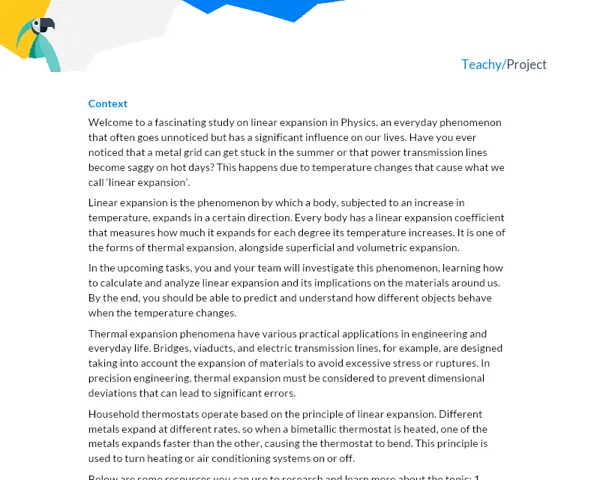Contextualization
Understanding average vector speed is crucial for a variety of areas, going far beyond Physics. In the academic field, average vector speed is a fundamental part of the study of mechanics, a branch of physics that deals with movements and their causes. This concept also extends to other disciplines such as mathematics and chemistry, resulting in a wide range of real-world applications.
In our daily lives, we observe the concept of average vector speed in common situations. For example, when we take a trip, we usually calculate the time we need to reach our destination considering the distance and the average speed we will maintain. However, this average speed that we generally consider is scalar, not taking into account the direction and sense of movement, which are the elements that differentiate vector speed from scalar speed.
Introduction
Physics is the science that studies the phenomena of nature, the basic elements that make up the world, and how they interact. Within this vast field of study, mechanics is the part of physics that concerns itself with the movement of bodies and the forces acting on them. Understanding movement is fundamental to physics, and therefore, we study different types of movements and the physical quantities that describe these movements, one of them being average vector speed.
Average vector speed is a vector physical quantity that has magnitude, direction, and sense. It is defined as the ratio between the variation of the displacement vector and the time interval in which this displacement occurs. It is different from average scalar speed, which is the ratio between the distance traveled and the time taken to travel it, ignoring the direction and sense of movement.
In this project, you will deepen your knowledge about average vector speed and average scalar speed. You will see that these concepts are not only theoretical, they are applied in many aspects of our modern world. It is essential for the project to understand the definition of such concepts, as well as the difference between them, and that is why we present some useful references in Portuguese for you to base yourself and delve into the subject.
Practical Activity
Title: Speed by Multiple Vectors - A Toy Cars Marathon
Project Objective
- Understand the difference between average vector speed and average scalar speed.
- Apply the concepts of displacement and time to calculate average vector speed.
- Understand the intersection of physics with socio-environmental, economic, and political issues through the project.
- Develop teamwork, time management, and problem-solving skills.
- Produce a comprehensive report on the project carried out.
Detailed Project Description
Students should work in groups of 3 to 5 people. Each group must prepare a circuit with several stages and different directions (suggestion: use toy cars and an improvised track with colored papers or cardboard). Remember that the track must have a starting and ending point, and may also have curves.
Each group must carefully measure the displacement of the car in each segment of the circuit and the time it takes for the car to travel each segment. With these measurements, the groups must calculate the average vector speed of the car for the entire circuit.
In a second part of the project, students should discuss socio-environmental, political, and economic issues related to the current world's dependence on non-renewable resources. This can be done through the discussion of alternative engine technologies and the production of new materials, comparing the operation of these alternative engines with the movement of the car on the circuit.
The activity should last 3 classes of 4 hours each, totaling 12 hours. The project report must be submitted one week after the activity is completed.
Required Materials
- Toy car.
- Colored paper or cardboard to build the track.
- Stopwatch.
- Ruler or measuring tape.
- Pens and notebook for notes.
Step by Step
- Form groups of 3 to 5 students.
- Each group must create a unique circuit using colored paper or cardboard for the toy car to navigate.
- Measure the displacement of the car in each segment of the circuit and the time it takes to travel each segment.
- Calculate the average vector speed of the car for the entire route.
- Discuss socio-environmental, political, and economic issues related to the dependence on non-renewable resources.
- Research and discuss alternative engine technologies and the production of new materials.
- Write a detailed activity report detailing the work done.
Project Deliverables
After completing the practical part of the project, each group must prepare a document in the form of a report containing:
- Introduction: The theme should be contextualized, its relevance and real-world application, as well as the objective of this project.
- Development: The theory behind the central theme of the project should be explained, the activity should be detailed, the methodology used should be indicated, and finally, the results obtained should be presented and discussed.
- Conclusion: The work should be concluded by summarizing its main points, explaining the learnings obtained, and drawing conclusions about the project.
- Bibliography: The sources on which they relied to work on the project should be indicated, such as books, web pages, videos, etc.
The document should be written clearly and coherently, respecting the rules of the Portuguese language and the structure of a scientific report. In addition, each topic of the report should fit and complement what was worked on in the project.


